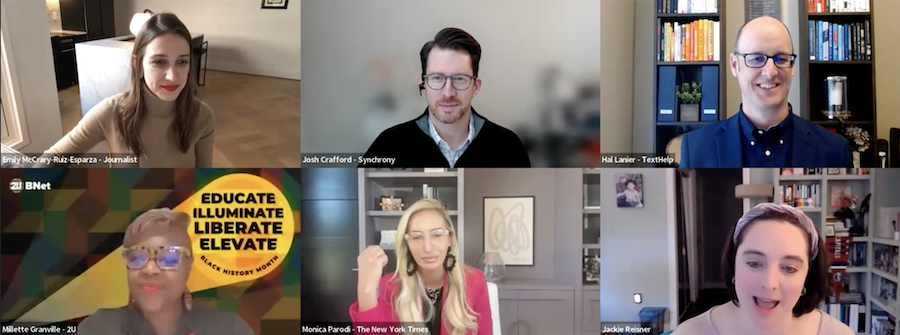How to Support Workers in Times of Crisis, From Natural Disasters to Personal Challenges
“What I love about benefits is that it’s not stagnant. What was considered a hot benefit 20 years ago ain’t a hot benefit today, and there’s always a need to make sure what we’re providing through benefits–yes, we want to make sure it’s competitive–is truly meeting the needs of the people,” said Chris Smith, a veteran of the benefits field with more than two decades of experience.Yet he’s surprised by how few people will simply ask employees what they need. “There is this belief that, if we ask, if we do a survey, we are signing a promissory note,” he said. So rather than promise something they can’t deliver, some don’t ask at all. But that’s not how Smith sees a survey or a sit-down meeting: It’s not a promise, it’s an exercise.Smith is the head of benefits at Universal Music Group, the music label supporting massive stars including Taylor Swift, Rihanna, Stevie Wonder, and the Rolling Stones. Smith spoke during a fireside chat at From Day One’s January virtual conference on benefits and total rewards. He offered frank advice for how employers can support their workers in crisis and in peace.Smith prides himself on delivering great benefits, so he was disappointed to find, during an open enrollment roadshow, that employees simply didn’t know what’s available to them. The same weakness so many benefits leaders find in their own organizations. And Smith prides himself on great communications emails, so he was equally disappointed to learn that those weren’t making traction.But that was the point of this listening tour, to find ways to make the system better. He’s now exploring creative ways to strengthen comms and lower barriers to access so employees can find and get what they need in good times and in bad.Though this isn’t a part of UMG’s process yet, Smith says he’d like to introduce text messaging or mailers. “People are bored of emails. People are overwhelmed with emails, and because of that, they’re missing really important information.” He’s also exploring old-school methods like mailers. If he can “shock” employees with novel or unexpected communication methods, they may be more likely to listen.Journalist Emily McCrary-Ruiz-Esparza interviewed Christopher Smith of Universal Music Group (photo by From Day One)In the meantime, they’ve made access easier. “People are not thinking about benefits between nine and five. It’s around 5:15 when you’re at the pharmacy and you’re trying to remember, ‘Oh, shoot, who do I call for my pharmacy benefits? What’s that phone number? I can’t find my ID card.’”So, he stood up a microsite with basic information on benefits–which company handles this or that and which phone numbers to call for help. There’s no log-in required, so employees don’t have to bother with a lengthy sign-in process as the line at Walgreens forms behind them.Universal Music Group is headquartered in Santa Monica, at the epicenter of the recent Los Angeles fires that killed 28 people and displaced more than a hundred thousand. When employees came looking for support and resources, Smith was clear on his team’s role in providing disaster relief: They pulled together every resource, whether directly or indirectly related, into a single place that employees could reference and use. Removing barriers to access was priority number-one.He also made himself personally available. “One of the things that I do–and my family sometimes chastises me for doing it–is make my personal cell phone number available in a heartbeat. I might not be able to get to you as quickly through an email, but you will be able to get to me pretty quickly by calling my cell phone. I don’t want there to be any guard rails or barriers to getting information.”Smith is preparing for the next disaster, hoping it never comes. “However, I think we’d all be irresponsible if we came through this, and didn’t take anything away from the experience and ask ourselves, what can we do better? How can we be more prepared?”Emily McCrary-Ruiz-Esparza is an independent journalist and From Day One contributing editor who writes about business and the world of work. Her work has appeared in the Economist, the BBC, The Washington Post, Inc., and Business Insider, among others. She is the recipient of a Virginia Press Association award for business and financial journalism.





